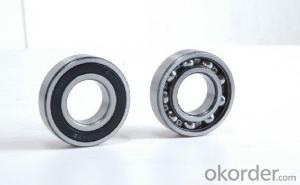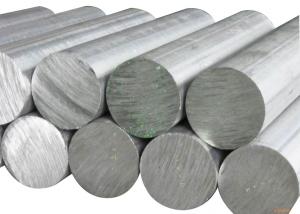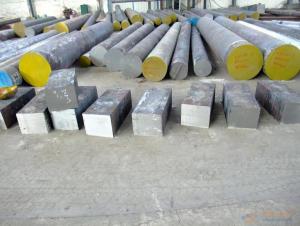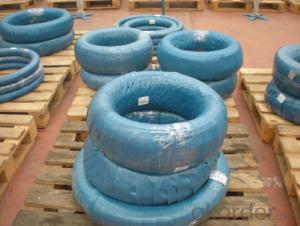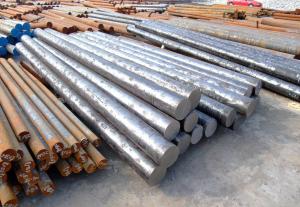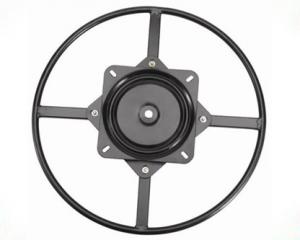Stainless IPEAA 200 IPE for construction
- Loading Port:
- Tianjin
- Payment Terms:
- TT or LC
- Min Order Qty:
- 10000 m.t.
- Supply Capability:
- 10000 m.t./month
OKorder Service Pledge
OKorder Financial Service
You Might Also Like
Product Description:
OKorder is offering Stainless IPEAA 200 IPE for construction at great prices with worldwide shipping. Our supplier is a world-class manufacturer of steel, with our products utilized the world over. OKorder annually supplies products to European, North American and Asian markets. We provide quotations within 24 hours of receiving an inquiry and guarantee competitive prices.
Product Applications:
Stainless IPEAA 200 IPE for construction are ideal for structural applications and are widely used in the construction of buildings and bridges, and the manufacturing, petrochemical, and transportation industries.
Product Advantages:
OKorder's Stainless IPEAA 200 IPE for construction are durable, strong, and resist corrosion.
Main Product Features:
· Premium quality
· Prompt delivery & seaworthy packing (30 days after receiving deposit)
· Corrosion resistance
· Can be recycled and reused
· Mill test certification
· Professional Service
· Competitive pricing
Product Specifications:
Grade | AISI 52100, ASTM E52100, DIN 1.3505,JIS SUJ2, GCr15 |
Dimensions | Diameter: 30-60mm Length: 2000-13000mm or as required |
Shape | Round Bar |
Type | Alloy Steel Bar |
Delivery Condition | Black Surface |
Material | Bearing Steel |
Technique | Hot Rolled |
Usage and Applications of Bearing Steel Round Bar
Bearing steels are used for ball and roller bearing applications and are comprised of low carbon steels and high carbon through harden able steel.
First the famous 1C-1.5Cr steel from which the majority of bearings are made. Its structure is apparently well-understood and the focus is on purity in order to avoid inclusions which initiate fatigue during rolling contact. Then there is the M50 steel and its variants, from which bearings which serve at slightly higher temperatures in aeroengines are manufactured, based on secondary-hardened martensite.
Tapered roller bearing are generally used to support combined load mainly consisting of radial load. Their cups are separable for easy assembling ,During mounting and using, radial clearance and axial clearance can be adjusted and preloaded mounting can be made.
Packaging & Delivery of Bearing Steel Round Bar
Packaging Detail: ASTM 52100 Steel in seaworthy packing or on customer request; Packed in bundles with standard export sea-worthy package or as customer require
Delivery Detail: 45 days after confirmed
Trade terms: FOB, CFR, CIF ou as customer's required
MOQ: 25 tons or at customer's demands. If the quantity is good, the price will be better.
Processing of Bearing Steel Round Bar
The processing of Bearing Steel Round Bar is hot rolled (strictly control sulphur, phosphorus and non-metallic inclusions content and distribution)
Chemical Composition of Bearing Steel Round Bar
C | Si | Mn | Cr | Ni | Cu |
Equal or less than | |||||
0.95-1.05 | 0.15-0.35 | 0.25-0.45 | Cr:1.40-1.65 | 0.30 | 0.25 |
All products' chemical composition and specification can be design according to customers' requirement.
Note of Bearing Steel Round Bar
1. According to national standard (GB) for our products, if not, supply according to national standards (GB) or agreement.
2. We can not only provide electric furnace +LF+VD and electros lag re-melting (ESR) steel forging materials, but also forging products of piece, bar, etc.
3. Our company is equipped with roll equipment and can provide our customers with roll billets or finished.
4. Please send us your detailed specifications when inquire. We will reply to you ASAP.
5. Certificate of quality is issued in English, in addition the normal terms, production process, the mechanical property (yield strength, tensile strength, elongation and hardness. forged ratio, UT test result, Grain size, heat treatment methods and the sample of is shown on the certificate
FAQ:
Q1: How soon can we receive the product after purchase?
A1: Within three days of placing an order, we will begin production. The specific shipping date is dependent upon international and government factors, but is typically 7 to 10 workdays.
Q2: Can stainless steel rust?
A2: Stainless does not "rust" as you think of regular steel rusting with a red oxide on the surface that flakes off. If you see red rust it is probably due to some iron particles that have contaminated the surface of the stainless steel and it is these iron particles that are rusting. Look at the source of the rusting and see if you can remove it from the surface.
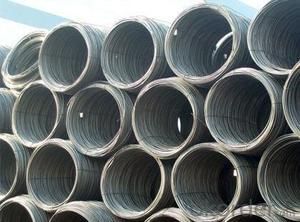

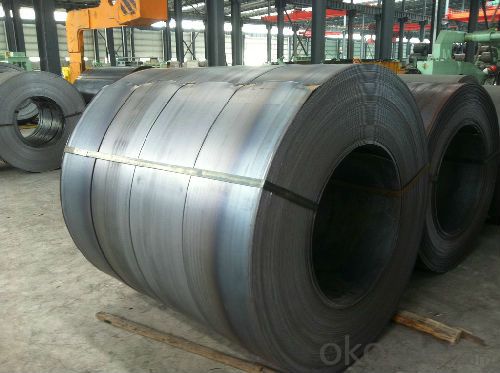
- Q:What are the different cutting grades of special steel?
- Various industries commonly utilize multiple cutting grades of special steel, each possessing specific properties and characteristics tailored for different cutting applications. High-speed steel (HSS), for instance, is renowned for its exceptional hardness, wear resistance, and heat resistance, enabling it to retain its hardness under high temperatures, rendering it perfect for high-speed machining operations. Another versatile cutting grade is tool steel, celebrated for its high hardness, toughness, and abrasion resistance, making it suitable for various cutting tools, dies, and molds. Stainless steel, on the other hand, is a sought-after cutting grade due to its corrosion resistance and durability, particularly in industries where precision cutting and cleanliness are paramount, such as food, medical, and automotive sectors. Carbon steel, a commonly used cutting grade, boasts impressive strength and toughness, making it ideal for cutting tools, knives, and blades. However, it requires proper maintenance and care to prevent rusting, as it is susceptible to corrosion. Conversely, alloy steel is a cutting grade created by combining different elements to enhance its properties. It offers improved hardness, strength, and wear resistance, rendering it suitable for high-stress cutting applications prevalent in the aerospace, automotive, and construction industries. These examples merely scratch the surface of the diverse range of cutting grades of special steel available. Each grade possesses unique properties and advantages, empowering manufacturers to select the most appropriate grade based on specific cutting requirements and conditions.
- Q:How does special steel contribute to energy efficiency?
- Special steel contributes to energy efficiency in several ways. Firstly, it is used in the manufacturing of energy-efficient appliances and equipment, such as refrigerators, air conditioners, and turbines. This steel has superior strength and durability, allowing for the production of lighter and more compact designs, which reduces energy consumption during operation. Secondly, special steel is used in the construction of energy-efficient buildings and infrastructure. Its thermal properties, such as high heat resistance and low thermal conductivity, help in reducing heat transfer, resulting in lower energy requirements for heating and cooling. Lastly, special steel is also utilized in renewable energy technologies like wind turbines and solar panels, where its corrosion resistance and high strength-to-weight ratio enhance their efficiency and longevity. Overall, special steel plays a crucial role in promoting energy efficiency across various industries and sectors.
- Q:What are the emerging trends in special steel production?
- There are several emerging trends in special steel production that are shaping the industry. 1) Increasing demand for high-performance alloys: With advancements in technology and industrial applications, there is a growing need for special steels with superior properties like high strength, corrosion resistance, and heat resistance. This has led to a higher demand for special alloys such as stainless steel, tool steel, and superalloys. 2) Adoption of advanced manufacturing techniques: Special steel production is witnessing a shift towards advanced manufacturing techniques like additive manufacturing (3D printing) and precision machining. These techniques allow for the production of complex geometries and customized components, leading to improved efficiency and reduced material waste. 3) Focus on sustainability: The steel industry is increasingly adopting sustainable practices to reduce its environmental footprint. This includes the use of recycled materials, energy-efficient production processes, and waste management strategies. As a result, special steel producers are investing in cleaner technologies to meet the growing demand for sustainable steel products. 4) Industry 4.0 integration: The integration of digital technologies, automation, and data analytics is revolutionizing the special steel production process. Industry 4.0 solutions enable real-time monitoring, predictive maintenance, and optimization of production parameters, resulting in increased productivity, quality, and cost-effectiveness. 5) Development of new alloys for emerging industries: With the rise of new industries such as aerospace, renewable energy, and electric vehicles, special steel producers are developing innovative alloys to meet their specific requirements. For example, the development of lightweight, high-strength steels for aerospace applications or corrosion-resistant steels for offshore wind turbines. 6) Global collaborations and partnerships: Special steel producers are increasingly collaborating with research institutions, universities, and other industry players to drive innovation and share knowledge. These collaborations help in developing new steel grades, exploring new applications, and improving production processes. Overall, the emerging trends in special steel production revolve around meeting the demand for high-performance alloys, adopting advanced manufacturing techniques, focusing on sustainability, integrating Industry 4.0 technologies, developing alloys for emerging industries, and fostering collaborations. These trends are shaping the future of special steel production, creating opportunities for growth and innovation in the industry.
- Q:Can special steel be used for making marine components?
- Yes, special steel can be used for making marine components. Special steel is often chosen for its corrosion resistance, strength, and durability, which are crucial properties required for components used in marine environments. These components need to withstand exposure to seawater, harsh weather conditions, and extreme pressures. Special steel alloys such as stainless steel or duplex steel are commonly used for marine applications due to their excellent resistance to corrosion and ability to maintain structural integrity in marine environments.
- Q:What are the requirements for special steel used in transportation infrastructure?
- Special steel used in transportation infrastructure must meet certain requirements to ensure its durability, strength, and resistance to various environmental factors. Some of the key requirements for special steel in transportation infrastructure include: 1. High Strength: Special steel used in transportation infrastructure must have high tensile strength to withstand heavy loads and stresses. It should be able to resist deformation and maintain its structural integrity under significant pressure. 2. Corrosion Resistance: Transportation infrastructure is often exposed to harsh weather conditions, including rain, humidity, and saltwater. Special steel must have excellent corrosion resistance to prevent rusting and deterioration over time. This is particularly important for bridges, tunnels, and railway tracks located near coastal areas. 3. Fatigue Resistance: Transportation infrastructure experiences repetitive and cyclic loading, which can lead to fatigue failure if the steel used is not resistant to this type of stress. Special steel should have good fatigue resistance properties to prevent cracking and failure due to repeated loading. 4. Weldability: Special steel used in transportation infrastructure should have good weldability to facilitate construction and repairs. It should be easily weldable without compromising its strength and performance. 5. Impact Resistance: Transportation infrastructure, such as guardrails and crash barriers, is subjected to impact loads from vehicles. Special steel should possess excellent impact resistance to absorb and distribute the energy from impacts, reducing the risk of catastrophic failure. 6. Fire Resistance: In the event of a fire, special steel used in transportation infrastructure should have a high melting point and retain its structural integrity for a reasonable amount of time. This is crucial for ensuring the safety of passengers and minimizing the damage caused by fire incidents. 7. Low Maintenance: For cost-effectiveness and long-term sustainability, special steel used in transportation infrastructure should require minimal maintenance. It should have a long service life and minimal need for repainting, repair, or replacement. Meeting these requirements ensures that the special steel used in transportation infrastructure can provide a safe, reliable, and durable foundation for roads, bridges, railway tracks, and other critical components of the transportation network.
- Q:What are the factors affecting the machinability of special steel?
- The machinability of special steel can be influenced by a variety of factors. 1. The composition of special steel plays a significant role in its machinability. Certain alloying elements, such as sulfur and lead, can enhance machinability by creating free-cutting properties. Conversely, elements like chromium and nickel can make the steel more difficult to machine. 2. Machinability can also be affected by the hardness of the special steel. As the hardness increases, the steel becomes more challenging to machine. Harder steel requires higher cutting forces, which can lead to increased tool wear and slower machining speeds. 3. The microstructure of special steel, including grain size and distribution, can have an impact on machinability. Fine-grained steels generally exhibit better machinability compared to coarse-grained ones. Additionally, the presence of certain phases, such as carbides, can pose challenges during machining. 4. The heat treatment process applied to special steel can influence its machinability. Certain heat treatments, such as annealing or stress relieving, can improve machinability by reducing hardness and internal stresses. Conversely, hardening treatments can increase hardness, making the steel more difficult to machine. 5. Machinability can also be affected by the choice of cutting conditions. Factors such as cutting speed, feed rate, and depth of cut need to be optimized to balance productivity and tool life. Inadequate cutting conditions can result in excessive tool wear, poor surface finish, and reduced machining efficiency. 6. The selection of cutting tools is critical for achieving good machinability in special steel. The tool material must possess appropriate hardness, toughness, and wear resistance to withstand the cutting forces generated during machining. The tool geometry, including rake angle and relief angle, also influences chip formation and heat dissipation, thereby impacting machinability. 7. Proper lubrication and cooling methods are essential for achieving good machinability. Lubricants help reduce friction and heat generation during machining, while cooling methods, such as flood cooling or misting, can dissipate heat and prolong tool life. Insufficient lubrication or cooling can result in increased tool wear, surface finish issues, and reduced machinability. In conclusion, achieving improved machinability and productivity in machining special steels requires a comprehensive understanding and optimization of factors related to composition, microstructure, heat treatment, cutting conditions, tooling, and cooling methods.
- Q:What are the different methods of surface texturing for special steel?
- There are several different methods of surface texturing for special steel, each with its own unique advantages and applications. Some of the most common methods include: 1. Shot blasting: This process involves propelling small metal or ceramic particles at high speeds onto the surface of the steel. It removes any impurities or contaminants on the surface, creating a textured finish that improves adhesion for coatings and paints. 2. Acid etching: This method involves immersing the steel in an acidic solution, which selectively removes a thin layer of the surface to create a textured pattern. Acid etching can be used to achieve intricate designs or patterns on the steel surface. 3. Mechanical grinding: This technique involves using abrasive tools to physically grind and remove material from the surface of the steel. It can be used to create a range of textures, from smooth to rough, depending on the grit size of the grinding tool. 4. Laser texturing: This advanced method uses laser technology to create precise and intricate patterns on the surface of the steel. Laser texturing offers high precision and repeatability and can be used to achieve complex designs that are difficult to achieve with other methods. 5. Electrochemical etching: This process involves using an electric current to selectively dissolve the surface of the steel, creating a textured pattern. It can be used to achieve consistent and controlled textures on the steel surface. Each method of surface texturing has its own advantages and limitations, and the choice of method depends on the desired texture, the specific properties of the special steel, and the intended application.
- Q:How long does special steel typically last in various applications?
- The lifespan of special steel in various applications can vary depending on several factors. Special steel is known for its exceptional strength, durability, and resistance to corrosion, making it suitable for a wide range of applications. However, the actual lifespan of special steel will depend on the specific application, maintenance practices, and environmental conditions it is exposed to. In general, special steel can last for several decades or even longer when used in industries such as construction, automotive, aerospace, and manufacturing. For instance, in building structures, special steel can last for 50 to 100 years, thanks to its robustness and ability to withstand extreme loads and weather conditions. In automotive applications, special steel components like engine parts, suspension systems, and body frames can have a lifespan of 15 to 30 years, given that they are properly maintained and not subjected to excessive wear and tear. When it comes to the aerospace industry, special steel is commonly used in critical components like turbine blades, landing gears, and fuselage structures. These parts undergo rigorous testing and inspection procedures and are designed to last for decades, typically around 30 to 50 years, before requiring replacement or refurbishment. In manufacturing processes, special steel tools and dies can have a lifespan ranging from a few years to several decades, depending on the intensity of use, the material being processed, and the maintenance practices employed. Proper lubrication, cooling, and regular maintenance can significantly extend the lifespan of these tools. It is important to note that the lifespan of special steel can be adversely affected by factors such as exposure to harsh chemicals, high temperatures, aggressive environments, or inadequate maintenance. Therefore, regular inspections, maintenance, and adherence to recommended usage guidelines are crucial in ensuring the longevity of special steel in various applications.
- Q:How is special steel used in the production of cutting inserts?
- The unique properties of special steel make it the ideal choice for producing cutting inserts. Cutting inserts are utilized in machining operations to shape and remove material from a workpiece. These inserts must possess the ability to endure high temperatures, resist wear and abrasion, and maintain their sharp cutting edges for extended periods. Commonly referred to as tool steel, special steel is specifically engineered to meet these requirements. It is an alloy that incorporates a variety of elements like chromium, tungsten, vanadium, and molybdenum, which enhance its mechanical properties. With its exceptional hardness, toughness, and resistance to high temperatures, special steel is a suitable material for cutting inserts. To further augment its properties, the special steel employed in manufacturing cutting inserts undergoes a series of processes, including heat treatment. This process involves subjecting the steel to specific temperatures and rapidly cooling it, resulting in increased strength and hardness. By undergoing heat treatment, the cutting inserts become capable of withstanding the extreme forces and temperatures encountered during machining operations. Moreover, special steel can be coated with materials like titanium nitride or diamond-like carbon to enhance its performance. These coatings contribute to the hardness, friction reduction, and overall wear resistance of the cutting inserts, ultimately extending their lifespan and improving efficiency. In conclusion, special steel is selected for the production of cutting inserts due to its remarkable hardness, toughness, high-temperature resistance, and wear resistance. These properties enable the cutting inserts to withstand the demanding conditions of machining operations and retain their sharp cutting edges for prolonged periods. As a result, material removal is carried out efficiently and precisely.
- Q:Can special steel be used in the railway industry?
- Yes, special steel can be used in the railway industry. Special steel alloys are often utilized in the manufacturing of railway components such as rails, wheels, and axles. These alloys possess enhanced mechanical properties, including increased strength, durability, and resistance to wear and fatigue. This allows the railway infrastructure to withstand heavy loads, high-speed trains, and harsh operating conditions, ensuring the safety and reliability of railway systems.
1. Manufacturer Overview |
|
|---|---|
| Location | |
| Year Established | |
| Annual Output Value | |
| Main Markets | |
| Company Certifications | |
2. Manufacturer Certificates |
|
|---|---|
| a) Certification Name | |
| Range | |
| Reference | |
| Validity Period | |
3. Manufacturer Capability |
|
|---|---|
| a)Trade Capacity | |
| Nearest Port | |
| Export Percentage | |
| No.of Employees in Trade Department | |
| Language Spoken: | |
| b)Factory Information | |
| Factory Size: | |
| No. of Production Lines | |
| Contract Manufacturing | |
| Product Price Range | |
Send your message to us
Stainless IPEAA 200 IPE for construction
- Loading Port:
- Tianjin
- Payment Terms:
- TT or LC
- Min Order Qty:
- 10000 m.t.
- Supply Capability:
- 10000 m.t./month
OKorder Service Pledge
OKorder Financial Service
Similar products
New products
Hot products
Related keywords
